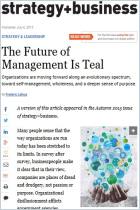
Read offline
Recommendation
Organizational life can be dispiriting for employees. Many people take little satisfaction in their jobs and managerial efforts to fix corporate culture often create problems. But companies can make life more gratifying for their people by reaching for a new developmental stage based on trust and collaboration. Organizational iconoclast Frederic Laloux explains how organizations evolved over time in line with seven historic stages of human development, expressed as color-tagged “paradigms.” He outlines two modern paradigms as models for creating a supportive corporate culture and earning solid profits as well. getAbstract recommends his unusual encyclopedic manual of organizational evolution as a menu of ideas for leaders seeking a collaborative path to profit.
Summary
About the Author
Frederic Laloux advises corporate leaders on achieving organizational efficiency and facilitates implementation of new organizational schemas. He formerly worked at McKinsey & Company.














Comment on this summary